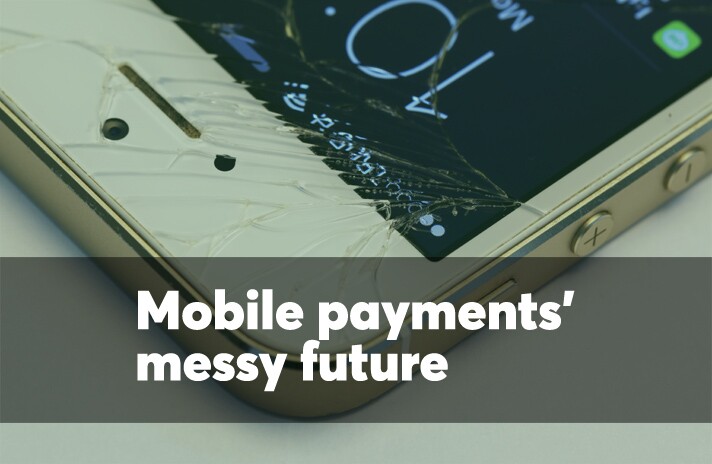

What may be more worrisome is that four years on, adoption isn’t forecast to radically shift either. Read on to find out why.
As age rises, the level of adoption sinks. A quarter of 45 to 54-year-olds are expected to make mobile payments in 2021, 13% of 55 to 64-year-olds and just 5% of those aged 65 or more. It is worth also noting that these adoption rates do not equate to habitual usage — the forecast is based around usage of proximity payments within the last six months, a low bar to achieve.
A gating factor on adoption may reside in the ongoing transition to EMV terminals, which typically come with built-in contactless capabilities, but there are more significant factors working against mobile wallet adoption that have nothing to do with the availability of accepting merchant hardware.

According to data published by BBVA on reasons for not using mobile payments, four out of five people found it easier just to use cash or cards and over two thirds of consumers said they didn’t see any benefit in using mobile payments.
This is worrisome for a number of reasons.
Further, today’s consumers are more than a little paranoid around the security and privacy of mobile payments — 67% stated that they didn’t use mobile payments because of concerns around security and 47% stated that they didn’t trust the technology.
Again, these are serious barriers to adoption. Consumers who feel that their finances are at risk will stick to legacy payment methods that. while not actually more secure, are at least familiar and well tested.
An additional third of consumers perceive mobile payments to be difficult and/or time consuming to set up. This perception may be a symptom of reduced attention spans, but more fundamentally speaks again to the lack of a clear advantage to mobile payments over cards and cash. If the benefit of mobile payments outweighed the effort of enrollment, then this issue would be minimized.
So, what can be done to tip the balance in favor of mobile proximity payments?

These are not easy concepts to relay to the layperson, and there are other factors in play as well...
However, education is without value if there isn’t a compelling value proposition. Two areas where stakeholders can sell the sizzle of mobile payments are speed and loyalty. Proximity payments are faster than cards and cash, and this attribute could win over consumers who are dissatisfied with perceived long wait times for EMV authorization. Mobile payments also provide the potential for developing new, dynamic forms of loyalty programs that can be synchronized with transactions — a faster and more effective way to encourage loyalty than scanning paper coupons.
All of the above require issuers and mobile wallet providers to focus heavily on optimizing the onboarding experience as much as possible. Leveraging unique attributes of mobile devices such as biometric authentication, digital document capture and location awareness can streamline processes for meeting KYC and AML requirements.
Finally, consumers need to know that a payment provider is legitimate and trustworthy. That may be problematic even for established retailers offering their own mobile payment solutions — data from the Electronic Payments Coalition shows that 43% of consumers trust a credit or debit card issuer to keep their card data secure, compared to just 11% trusting retailers. Mobile payment adoption could be accelerated by partnerships with trusted entities such as issuing banks and traditional payment networks to reassure skeptical customers and retailers.




